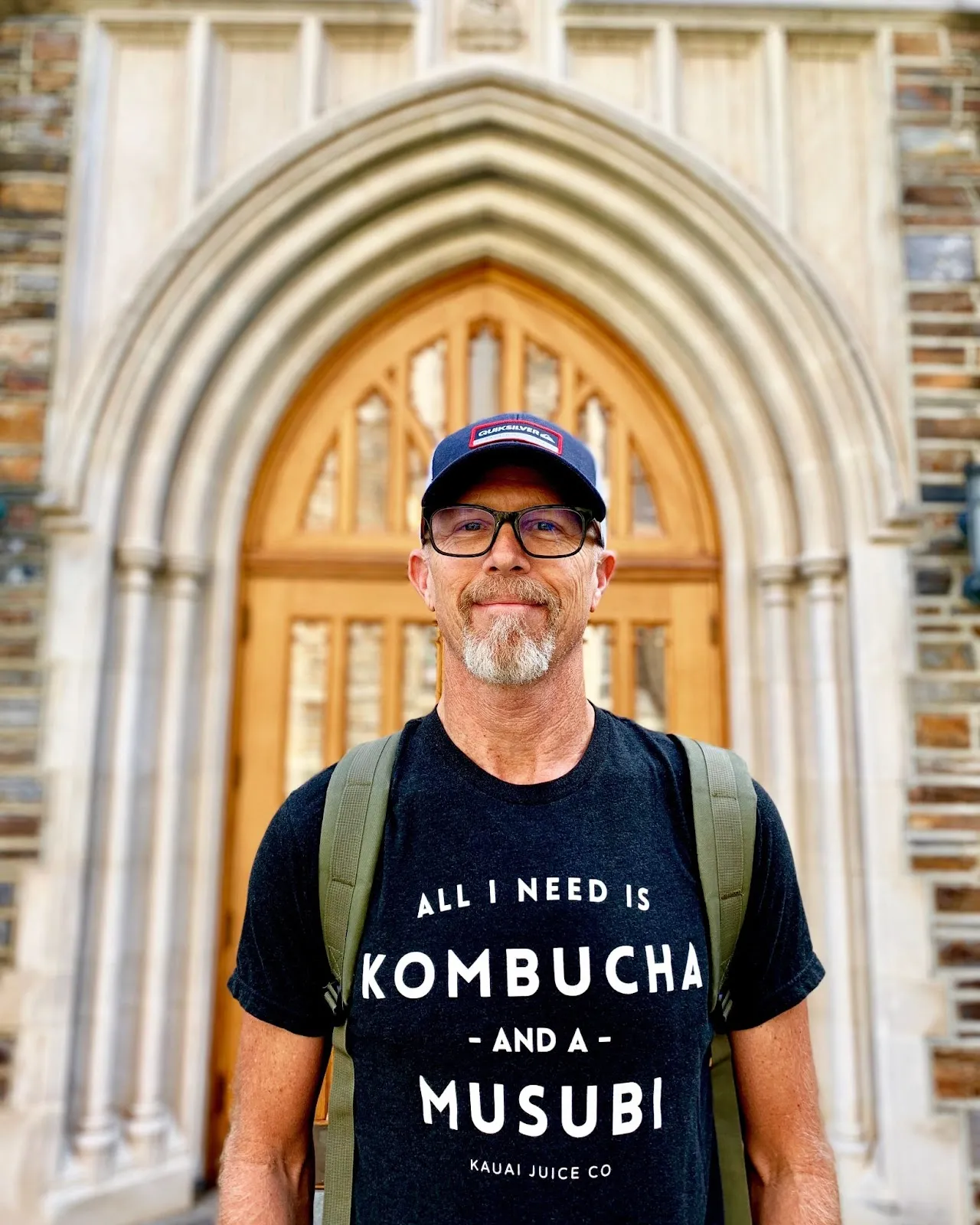
Alan felt great, lived well, and had zero symptoms. But one proactive lab test included in his Function membership, prostate specific antigen (PSA), raised a red flag—setting him on a path that uncovered aggressive prostate cancer just in time.
Going beyond healthy habits
Alan wakes up at 5:30am, drinks coffee, works out for an hour, gets dressed, and walks a mile and a half to his job as a palliative care chaplain at a prestigious research hospital. After work, he walks home, cooks dinner for his wife, meditates for 30 minutes, and goes to bed.
At 56 years old, he felt healthy and on top of his health.
But when he mapped out his family medical history during a pastoral education class, he discovered a pattern no one had ever mentioned: both his grandfather and uncle had died of prostate cancer. He realized there were gaps in what he knew about his own body.
That’s when he turned to Function for clarity. What he found through lab testing was something he never saw coming—elevated total prostate specific antigen (PSA Total).
How history sparked action
Alan had been curious about Function for a while—he’d heard Mark Hyman M.D. talk about it on podcasts, his wife had read one of his books and shared the highlights, and he liked that Function offered more comprehensive testing at an accessible price point. So when he discovered that both his grandfather and uncle had died from prostate cancer, it felt like the right time to act.
I saw Function included PSA, and just thought—yeah, I’ll do it now.
With 1 in 8 men developing prostate cancer in their lifetime, Alan wasn’t looking for problems—he was looking for peace of mind. He had no symptoms. But having worked with numerous cancer patients as a hospital chaplain, he knew it wasn’t worth waiting.
.webp)
What the test revealed
Most of Alan’s lab results looked great. His biological age came back 11 years younger than his chronological age. His testosterone had increased by 25% in a year. He felt like he was doing everything right.
But one number stood out: his total PSA.
In October 2024, his total PSA came back at 15.6 ng/mL—well above the typical threshold of 4 ng/mL. Alan could see that number wasn’t just out of range. It was a red flag he couldn’t ignore.
He got the results on a Sunday. The next day he walked into urology at his work, showed them the numbers, and asked to speak to someone.
The front desk didn’t hesitate: “Those numbers are too high. You need oncology.”
Within 48 hours, Alan had a referral. The urologist reviewed his results in the Function platform and didn’t hesitate. Instead of retesting, he moved quickly—ordering a biopsy and a PET scan for Alan. The outcome was clear: prostate cancer.
Caught just in time
In February 2025, Alan underwent a robot-assisted radical prostatectomy (RARP)—an approach that uses a robotic surgical system to assist the surgeon in performing precise removal of the prostate gland. He thought it had been caught early. But post-surgery, the biopsy revealed something different: the cancer was more aggressive and more advanced than expected. It had already begun to creep outside the prostate and touch the nerve bundle (a group of nerves bound together) near the prostate.
Had I not done Function, I would be walking around with that in me right now and have no idea.

Life post-surgery
Alan had no symptoms. He always felt great. But recovery from the surgery gave him time to reflect—and to reset.
“I couldn’t workout for six weeks after surgery, but I was really surprised how little muscle mass I lost. I used the time to rethink my workout routine, increase my protein intake, and I’m actually in better shape now than I was before.”
He took Function’s nutrition and supplement insights to heart—especially around cholesterol and heart health—and at his Function follow-up lab visit in May 2025 he saw his efforts pay off:
His HbA1c dropped to 5.6%—out of the prediabetic range.
LDL is down.
HDL is up.
Alan also retested his total PSA: it had dropped from 15.6 ng/mL to 0.5 ng/mL. That result was drastically lower, but still slightly elevated considering his prostate had been completely removed. Ideally, his PSA levels should have been undetectable (< 0.1 ng/mL).
That one data point prompted his next move—he followed up with his doctor and they came up with a treatment plan that included hormone therapy and short-term radiation to eliminate any risk of recurrence or residual cancer.
Health isn’t a feeling
Alan works in healthcare. He knows how easy it is to put off screenings, how often people feel dismissed, and how critical it is to advocate for yourself inside the system.
When asked if he ever saw prostate cancer coming, he doesn’t hesitate:
I never felt bad. I had zero symptoms. I always felt great.
Which goes to show—feeling healthy isn’t enough. It’s the very lesson he hopes others take from his story:
You can be really healthy, do all the right things, and still get cancer. That’s why doing things like Function is so important. Just saying ‘I feel good’ isn’t enough.
A mindset shift
Function didn’t make Alan healthy. It gave him the tools to better understand his body and run with the data to make his own informed decisions.
When asked what he wants others to know about Function, he says: “Spending $500 on screening—it’s money really well spent. It’s not a luxury. I really appreciate that Function is priced in a way that’s accessible.”
And beyond the numbers, the experience sparked a change in mindset.
He recalls surgery and recovery:
I was literally in a bed where I’ve visited patients before…in the same bed and now I’m wearing the gown.
A humbling moment—one that gave him a new perspective. He says it’s made him better at his job and reframed how he thinks about health:
I’ve really shifted my posture from ‘everything’s fine, someone else will take care of that’ to ‘no—this is up to me.’ That’s a big shift in the way I think and act.

A new definition of health
Alan has always lived what most would call a healthy life—30 years in Hawaii, a former surf instructor, dialed in on movement and nutrition. But now, his approach goes deeper.
He still works full-time. He still meditates daily. He still cooks dinner for his wife. But his understanding of health—what it means, what it demands, how it’s managed—has evolved.
“I think a lot of people have hesitancy around spending money on prevention,” he says. “It feels unnecessary. But I’d say—invest in those things early. They’re really worth it. And they’ll save you so much more in the long run.”
For Alan, Function didn’t just help flag something serious. It reshaped how he thinks about his body.
The lesson
When asked what he wants people to know about their health, he’s confident:
How much control you have over it. How important it is—what you eat, how you move your body. You have to advocate for yourself, be proactive and advocate for yourself in the healthcare system.
Alan didn’t wait for something to feel off—and it’s a good thing he didn’t.
Prostate cancer, when caught before it spreads too far, is often highly treatable.
He looked at his family history, considered the experiences of his patients, and made the call to get answers.
Alan’s story is a reminder: health isn’t about how you feel today.
It’s about what you do before anything starts to feel wrong.
